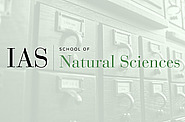Joint IAS Princeton University Astrophysics Colloquium
Oct
02
2018
Institute for Advanced Study/Princeton University Joint Astrophysics Colloquium
The Dynamic Milky Way in the Gaia Era
Adrian Price-Whelan
11:00am|Bloomberg Hall Lecture Hall
Sep
25
2018
Institute for Advanced Study/Princeton University Joint Astrophysics Colloquium - Speaker 2
Highlights of Cassini's Exploration of Saturn
Carolyn Porco
4:30pm|Princeton University, Peyton Hall, Room 145
Sep
25
2018
Institute for Advanced Study/Princeton University Joint Astrophysics Colloquium - Speaker 1
B-modes from the Early Universe and the Milky Way
11:00am|Wolfensohn Hall
Sep
18
2018
Institute for Advanced Study/Princeton University Joint Astrophysics Colloquium
Radiation-Dominated Black Hole Accretion Flows
11:00am|Bloomberg Hall Lecture Hall
May
01
2018
Institute for Advanced Study/Princeton University Joint Astrophysics Colloquium
The Dawn of Gravitational-Wave Astrophysics
Vicky Kalogera
11:00am|Princeton University, Peyton Hall Auditorium
Apr
17
2018
Institute for Advanced Study/Princeton University Joint Astrophysics Colloquium
The Next High Redshift Frontier for Massive Galaxies and Black Holes
Tiziana Di Matteo
11:00am|Princeton University, Peyton Hall Auditorium
Apr
10
2018
Institute for Advanced Study/Princeton University Joint Astrophysics Colloquium
Ubiquitous Instabilities in Dusty Gas
Phil Hopkins
11:00am|Princeton University, Peyton Hall Auditorium
Apr
03
2018
Institute for Advanced Study/Princeton University Joint Astrophysics Colloquium
Is the Word ‘Planet’ Still Meaningful?
Rebecca Oppenheimer
11:00am|Princeton University, Peyton Hall Auditorium
Mar
27
2018
Institute for Advanced Study/Princeton University Joint Astrophysics Colloquium
Weak Gravitational Lensing: Higher-order statistics and new inference approaches
Martin Kilbinger
11:00am|Princeton University, Peyton Hall Auditorium
Mar
13
2018
Institute for Advanced Study/Princeton University Joint Astrophysics Colloquium
New Probes of Old Structure: Cosmology with 21cm Intensity Mapping and the Cosmic Microwave Background
Laura Newburgh
11:00am|Princeton University, Peyton Hall Auditorium
